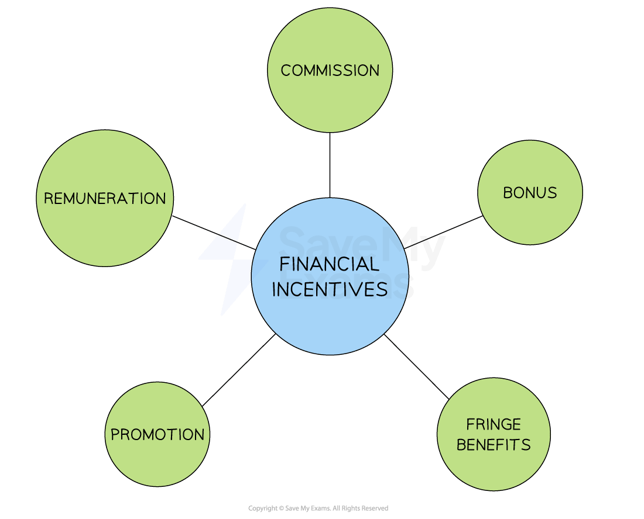Financial Incentives
- Financial incentives are rewards or payments given to employees in return for their labour or improved performance
- The different theories of human motivation offer varying perspectives on the role of money in motivating staff
- Herzberg's Two Factor Theory says that money is not generally a motivator, but the lack of it leads to dissatisfaction
- Maslow's Hierarchy of Needs argues that people move through levels of needs that motivate them; their lower-order needs are closely linked to financial rewards, while their higher-order needs are rarely linked to pay
- Physiological and safety needs can be partially met by providing adequate pay
- Love and Belonging needs are often met by encouraging aspects such as teamwork
-
Businesses commonly use a mixture of financial and non-financial methods to motivate workers
-
This helps to meet the individual needs of different workers they employ and helps avoid wasting financial rewards on those for whom it would be unlikely to improve their performance
-
Diagram: Financial Incentives

Financial incentives motivate some employees, depending upon the importance that they place on monetary items/money as a reward
An Explanation of Financial Incentives Available to Businesses
Incentive Type |
Explanation |
|
Remuneration |
|
|
Commission |
|
|
Bonus |
|
|
Promotion |
|
|
Fringe Benefits |
|

